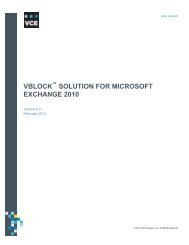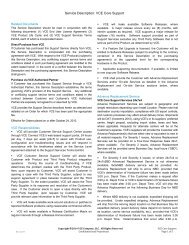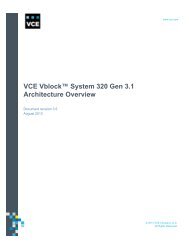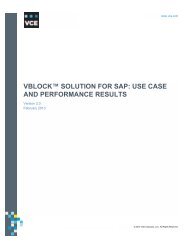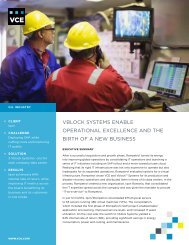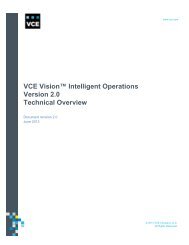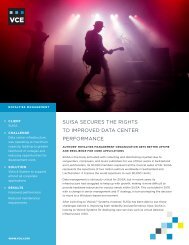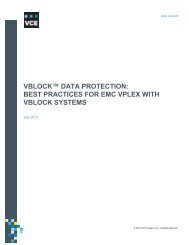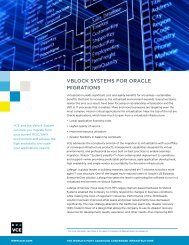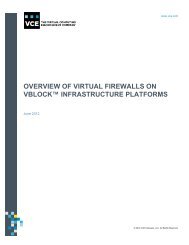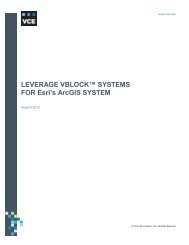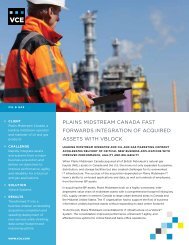Vblock Solution for Trusted Multi-Tenancy: Design Guide - VCE
Vblock Solution for Trusted Multi-Tenancy: Design Guide - VCE
Vblock Solution for Trusted Multi-Tenancy: Design Guide - VCE
You also want an ePaper? Increase the reach of your titles
YUMPU automatically turns print PDFs into web optimized ePapers that Google loves.
Secure separation<br />
Secure separation refers to the effective segmentation and isolation of tenants and their assets within<br />
the multi-tenant environment. Adequate secure separation ensures that the resources of existing<br />
tenants remain untouched and the integrity of the applications, workloads, and data remains<br />
uncompromised when the service provider provisions new tenants. Each tenant might have access to<br />
different amounts of network, compute, and storage resources in the converged stack. The tenant<br />
sees only those resources allocated to them.<br />
From the standpoint of the service provider, secure separation requires the systematic deployment of<br />
various security control mechanisms throughout the infrastructure to ensure the confidentiality,<br />
integrity, and availability of tenant data, services, and applications. The logical segmentation and<br />
isolation of tenant assets and in<strong>for</strong>mation is essential <strong>for</strong> providing confidentiality in a multi-tenant<br />
environment. In fact, ensuring the privacy and security of each tenant becomes a key design<br />
requirement in the decision to adopt cloud services.<br />
Service assurance<br />
Service assurance plays a vital role in providing tenants with consistent, en<strong>for</strong>ceable, and reliable<br />
service levels. Unlike physical resources, virtual resources are highly scalable and easy to allocate<br />
and reallocate on demand. In a multi-tenant virtualized environment, the service provider prioritizes<br />
virtual resources to accommodate the growth and changing business needs of tenants. Service level<br />
agreements (SLA) define the level of service agreed to by the tenant and service provider. The<br />
service assurance element of trusted multi-tenancy provides technologies and methods to ensure that<br />
tenants receive the agreed-upon level of service.<br />
Various methods are available to deliver consistent SLAs across the network, compute, and storage<br />
components of the <strong>Vblock</strong> System, including:<br />
• Quality of service in the Cisco Unified Computing System (UCS) and Cisco Nexus plat<strong>for</strong>ms<br />
• EMC Symmetrix Quality of Service tools<br />
• EMC Unisphere Quality of Service Manager (UQM)<br />
• VMware Distributed Resource Scheduler (DRS)<br />
Without the correct mix of service assurance features and capabilities, it can be difficult to maintain<br />
uptime, throughput, quality of service, and availability SLAs.<br />
© 2013 <strong>VCE</strong> Company, LLC. All Rights Reserved.<br />
10



